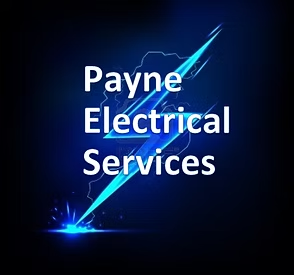In business, seizing opportunities often relies on having the right resources at the right time. Purchase Order Financing, also known as PO Financing, is one such resource that can be a game-changer for businesses, particularly small enterprises aiming to fulfill large orders. This article explores the concept of purchase order financing, its significance for small businesses, how it works, associated rates, pros and cons, and practical steps on how to secure it.
What is purchase order financing?
Purchase Order Financing, or PO Financing, is a special type of funding for businesses facing cash flow issues when fulfilling large orders. Unlike regular loans or lines of credit, purchase order financing provides money specifically for covering the costs of fulfilling purchase orders. This allows businesses to accept orders that exceed their current financial capacity, helping them grow and expand. In other words, businesses can fulfill orders without straining their cash reserves. This is particularly beneficial for businesses experiencing rapid growth or seasonal fluctuations in demand.
What PO financing means for small businesses
For small businesses, purchase order financing can be a lifeline, enabling growth opportunities that might otherwise be out of reach due to financial constraints. It helps businesses take advantage of profitable opportunities by providing funds to fulfill large orders, thus expanding their market share. Additionally, purchase order financing helps manage risks associated with fulfilling large orders using external financing.
Types of businesses that use PO financing
Various types of businesses can benefit from purchase order financing, including:
- Manufacturers
- Distributors
- Wholesalers
- Importers/Exporters
- Resellers
- Retailers
How does purchase order financing work?
Purchase order financing follows a simple process:
- Receiving a Purchase Order: A business gets a big purchase order but lacks the funds to fulfill it.
- Applying for Financing: The business applies for purchase order financing from a specialized financing company.
- Evaluation: The financing company checks if the customer placing the order is reliable and if the order can be fulfilled.
- Funding: If approved, the financing company provides the necessary funds to cover the order costs.
- Order Fulfillment: The business uses the funds to fulfill the order and deliver the goods.
- Repayment: Once the customer pays, the business repays the financing company, including any fees.
Table of Contents
Need invoicing? Bookipi’s invoicing app is available on mobile and web app.
How much are the rates for purchase order financing?
The rates for purchase order financing vary depending on factors such as the creditworthiness of the customer, the size of the purchase order, and the risk involved. Typically, purchase order financing rates are higher than traditional financing rates due to the specialized nature of the service and the associated risks. It’s important for businesses to carefully evaluate the terms and rates offered by different purchase order financing companies before committing to a financing arrangement.
Purchase order financing rates are often calculated on a per-30-day cycle, and tend to range from 1-6% per month. These fees are charged on the total supplier expense and typically increase the longer the customer takes to pay off their invoice.
Let’s say Ben’s Building Supplies gets $50,000 to pay the supplier. The financing company charges 3% every 30 days. If the customer pays in 30 days, Ben’s pays $1,500 in fees. But if they take 60 days, Ben needs to pay $2,500.
Purchase order financing pros & cons
Purchase order financing allows small businesses to seize growth opportunities by allowing the fulfillment of large orders and overcoming cash flow constraints. However, it often comes with higher financing rates compared to traditional methods which could affect the profit margin. For instance, a small construction company like Ben’s Building Supplies might use purchase order financing to accept a significant order for materials, ensuring timely delivery to the client, but potentially reducing their profit margin due to financing costs.
PROS | CONS |
|
|
How to get purchase order financing for your small business
Securing purchase order financing for your small business involves the following steps:
Check eligibility
Ensure your business meets the criteria for purchase order financing, like having reliable customers and a viable purchase order.
Choose a financing company
Research and compare financing companies to find one that offers favorable terms and rates for your business.
Prepare documentation
Gather necessary documentation, including purchase orders, customer information, and financial statements, to support your financing application.
Submit application
Submit your application for purchase order financing to the chosen financing company, providing all required documentation and information.
Await approval
Await the financing company’s decision on your application, which may involve a thorough evaluation of your business and the purchase order requested.
Fulfill order
If approved, use the provided funds to fulfill the purchase order and deliver the goods to the customer as per the agreed-upon terms.
Repay financing
Once the customer pays for the goods, use the proceeds to repay the financing company, including any fees or interest charges.
Requirements for purchase order funding applications
- Valid purchase orders from creditworthy customers.
- Documentation proving the viability and authenticity of the purchase order.
- Financial statements proving the financial health and stability of the business.
- Information about the products or goods to be supplied as per the purchase order.
Examples of purchase order financing companies and lenders
- Commercial Capital LLC specializes in serving businesses in the U.S. and Canada, and offers purchase order financing for orders over $100,000 with a gross profit margin of at least 20%. Their financing solutions are tailored to the needs of each business.
- Express Trade Capital provides financing solutions for pre-sold goods, covering the cost of transportation, customs, and duties. Financing is available for up to 100% of the cost.
- SouthStar Capital offers purchase order financing solutions with 100% financing on purchase orders. Businesses can receive funds within two to five days. Rates vary based on the size and duration of the transaction, typically ranging from 2% to 5% per 30-day period.
Financing alternatives to purchase order funding
While purchase order financing offers an effective solution for fulfilling large orders, businesses may also want to consider alternative financing options to suit their specific needs:
- Invoice financing: This option allows businesses to unlock cash by selling their outstanding invoices to a third party at a discount. It’s particularly useful for maintaining cash flow while waiting for customers to pay their invoices.
- Inventory financing: Businesses can leverage their existing inventory as collateral to secure financing. This can be beneficial for managing inventory levels, acquiring additional stock, or navigating seasonal fluctuations in demand.
- Equipment financing: This type of financing enables businesses to access essential equipment through loans or leases. Whether it’s machinery, vehicles, or technology infrastructure, this option allows businesses to spread the cost of equipment over time while still having access to the assets they need to operate efficiently.
- Business lines of credit: A business line of credit provides companies with flexible access to funds for various needs, such as covering day-to-day expenses, managing cash flow fluctuations, or seizing unexpected opportunities. Unlike traditional term loans, lines of credit offer businesses ongoing access to capital, allowing them to borrow and repay funds as needed.
Bookipi is an effective solution for bookkeeping, try it out!
Fuel your business ventures and track revenue and expenses effectively
In conclusion, purchase order financing can be a valuable tool for small businesses seeking to expand their operations and fulfill large orders. By understanding how purchase order financing works and following the necessary steps to secure funding, businesses can overcome cash flow constraints and seize growth opportunities. To streamline your business finances and track revenue and expenses effectively, consider utilizing Bookipi’s suite of financial management tools. From invoicing to expense tracking, Bookipi offers solutions to help you fuel your business ventures and achieve financial success.




